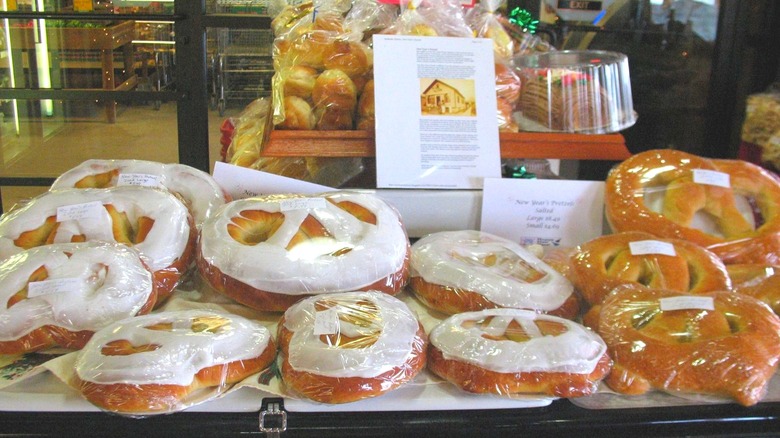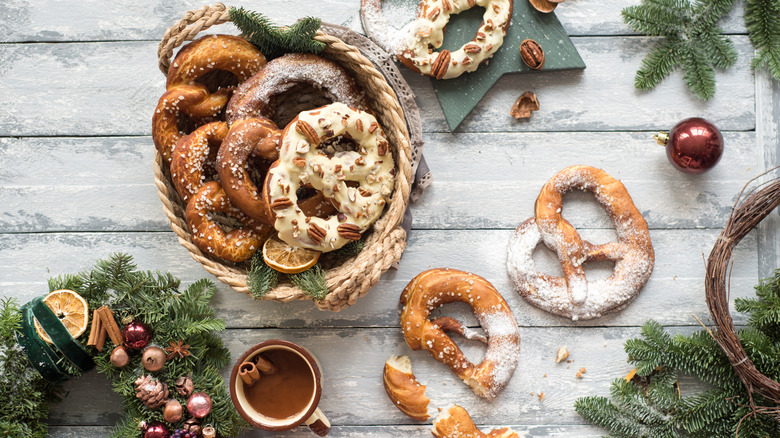Why Eating A Pretzel For New Year's Is Considered Good Luck
There are some New Year's good luck traditions that are extremely well known, like sharing a kiss at midnight. Then, there are some less ubiquitous, more regional ones, such as eating a pretzel. For instance, per the Pittsburgh Post-Gazette, many in their area ring in the new year by sharing a big, sugary pretzel of Danish-dough and white icing with nutty or fruity filling at midnight on New Year's Eve. Although they believe the practice to have originated in Germany's southwest, Pittsburgh is among just a few historically German communities that partake stateside. So, for a few days each year, New Year Pretzels are big business in the 'Burgh.
Pittsburgh Magazine also notes this tradition, reemphasizing the belief that it got its start in Europe. The publication claims that consuming a New Year's Pretzel is meant to bring the eater good luck for the entire year to come. What could possibly be the reason behind such a superstition?
Cultural origins
One must look fairly far back in time to find the true start of all this. Per History, the first pretzels were created by the Catholic Church in the 600s to provide a filling replacement for dairy, eggs, and meat during Lent. Monks would also give pretzels out as rewards to high-achieving students, thus cementing their role as a treat. This association with a religious organization gave pretzels an aura of good fortune. So, by the 1600s, European children were wearing pretzels as necklaces on New Year's to capitalize on their apparent luckiness.
The emergence of the New Year Pretzel as we know it today is unsurprisingly a bit more recent. According to Sandusky History, the modern tradition of a New Year's Pretzel began in Sandusky, Ohio at the beginning of the 1900s. Its sizable German population drew on the traditions of their homeland, with one rumor saying their ancestors walked the streets and traded pretzels as a form of saying "hello." Another claim states the shape of the pretzel represents the passage of time, with the circular exterior symbolizing the winter solstice and the inner cross representing the four seasons. Regardless of the inspiration, a number of bakeries in the area all contributed to the tradition's American start. Back then, the pretzels were adorned with intricate braids and eaten at New Year's Day breakfast. The tradition's changed a bit since last century, but the spirit of its well-wishes remains the same!

